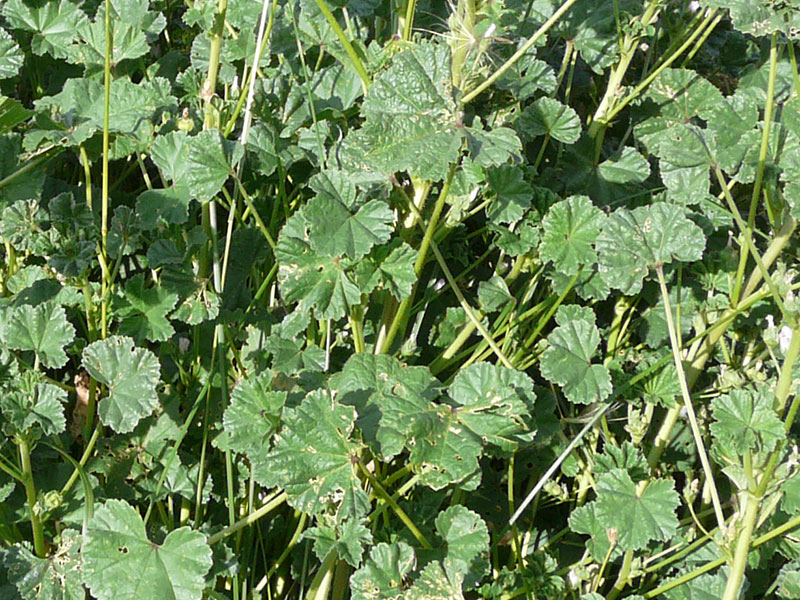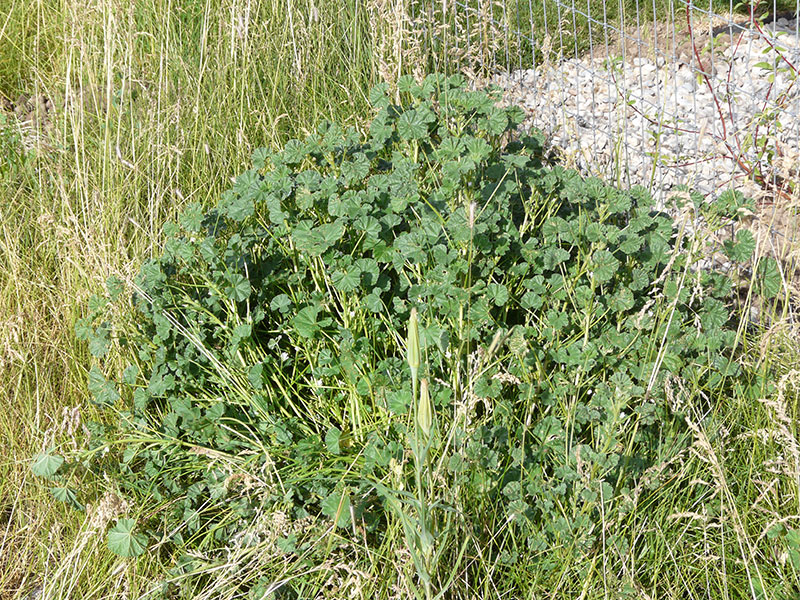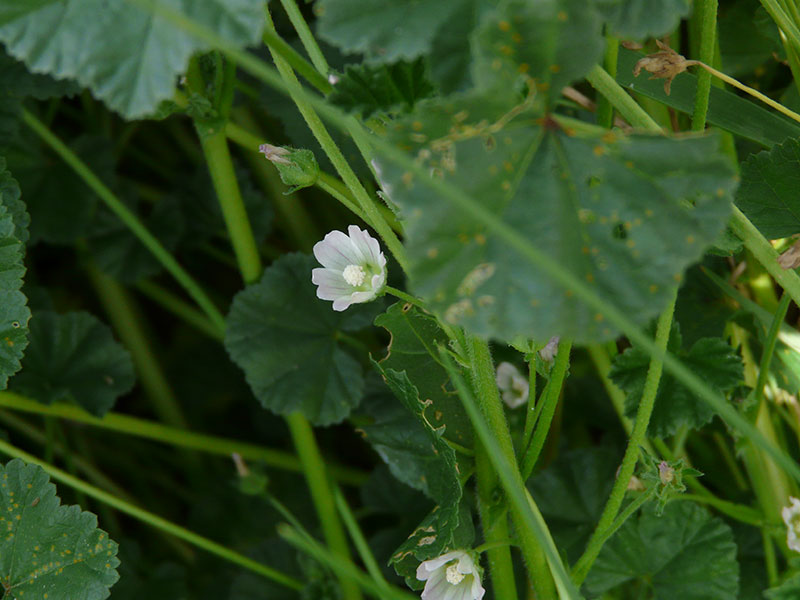Malva neglecta / cheeseweed
- leaves look like grocery store geraniums (Pelargonium)
- flowers are small, pink-ish and often buried in the foliage
- fruits are small (ca. 1/2 in) and round
Also known as: billy buttons, common mallow, buttonweed, cheeseplant, dwarf mallow, roundleaf mallow (medium.com also lists 4 French, 11 German, 20 Italian, 3 Greek, 9 Spanish and 1 Swedish common names)
The first thing you are likely to notice about cheeseweed – other than the fact that it has appeared in your garden uninvited – is the leaves. They look more or less like those of the “geraniums” you buy in a garden store and put in your garden for a season. These, actually, are not in the same genus as real geraniums, but that is neither here nor there. They are also not in the same genus, nor family, as cheeseweed.
Cheeseweed flowers are small – ca. 1/2 inch across – and like all members of the Malvaceae, they have multiple stamens merged into a single column making the central flower look like a small golf ball on a tee. This is really well illustrated by hibiscus flowers. In this case, the column is white, and the flower’s 5 petals are also white, but with pink lines that give the overall flower a pink-ish look.
The clearest thing about this plant is that it is a weed. It is found in wastelands, like construction sites and dumps, weedy parking lots, lawns, and your garden. But like other weeds discussed on this site, this doesn’t mean that it has no redeeming value. As James Harvey Bloom wrote in his Shakespeare’s Garden (1903) –
… the mallow is not to be despised; rough though it be and the companion of coarse weeds, its satin-like flowers of deep pink and dark-green reniform leaves set off many a bit of barren waste.
Also on the plus side, this plant can be consumed as a food, with its leaves, stalks and seed all being considered edible. Leaves fried in hot oil turn into delightfully crispy chips (they say). The fruits are a good crispy nibble raw (they say) and can be pickled like capers. The seeds are especially notable, lacking nasty chemicals and containing 21% protein and 15.2% fat. They can be eaten raw or cooked and have a pleasant nutty flavor (they say).
| Color | |
|---|---|
| Family | |
| Blossom size | |
| Inflorescence size | |
| Inflorescence type | |
| When? | |
| Where? |



